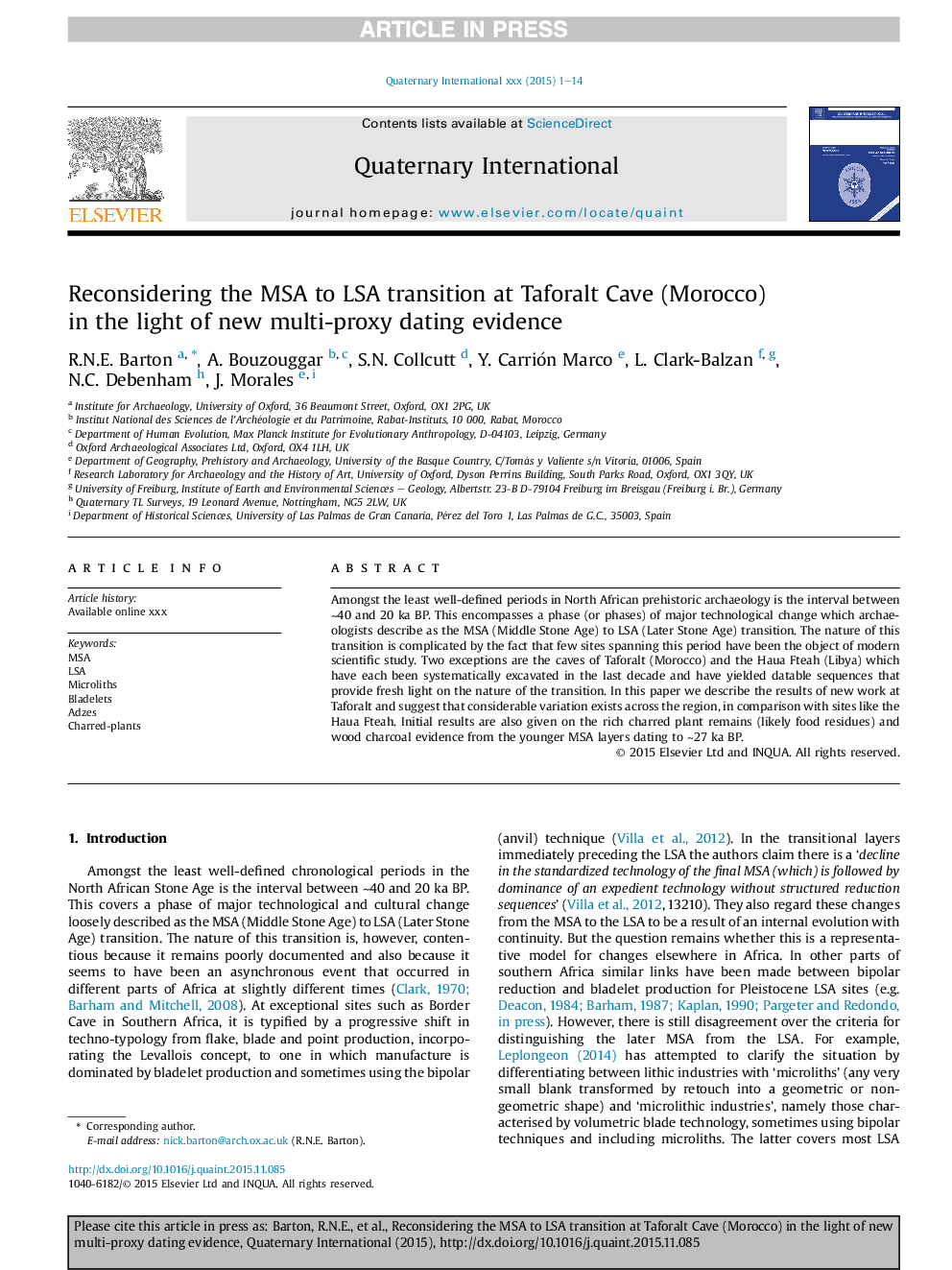| Article ID | Journal | Published Year | Pages | File Type |
|---|---|---|---|---|
| 5114217 | Quaternary International | 2016 | 14 Pages |
Abstract
Amongst the least well-defined periods in North African prehistoric archaeology is the interval between â¼40 and 20 ka BP. This encompasses a phase (or phases) of major technological change which archaeologists describe as the MSA (Middle Stone Age) to LSA (Later Stone Age) transition. The nature of this transition is complicated by the fact that few sites spanning this period have been the object of modern scientific study. Two exceptions are the caves of Taforalt (Morocco) and the Haua Fteah (Libya) which have each been systematically excavated in the last decade and have yielded datable sequences that provide fresh light on the nature of the transition. In this paper we describe the results of new work at Taforalt and suggest that considerable variation exists across the region, in comparison with sites like the Haua Fteah. Initial results are also given on the rich charred plant remains (likely food residues) and wood charcoal evidence from the younger MSA layers dating to â¼27 ka BP.
Keywords
Related Topics
Physical Sciences and Engineering
Earth and Planetary Sciences
Geology
Authors
R.N.E. Barton, A. Bouzouggar, S.N. Collcutt, Y. Carrión Marco, L. Clark-Balzan, N.C. Debenham, J. Morales,
